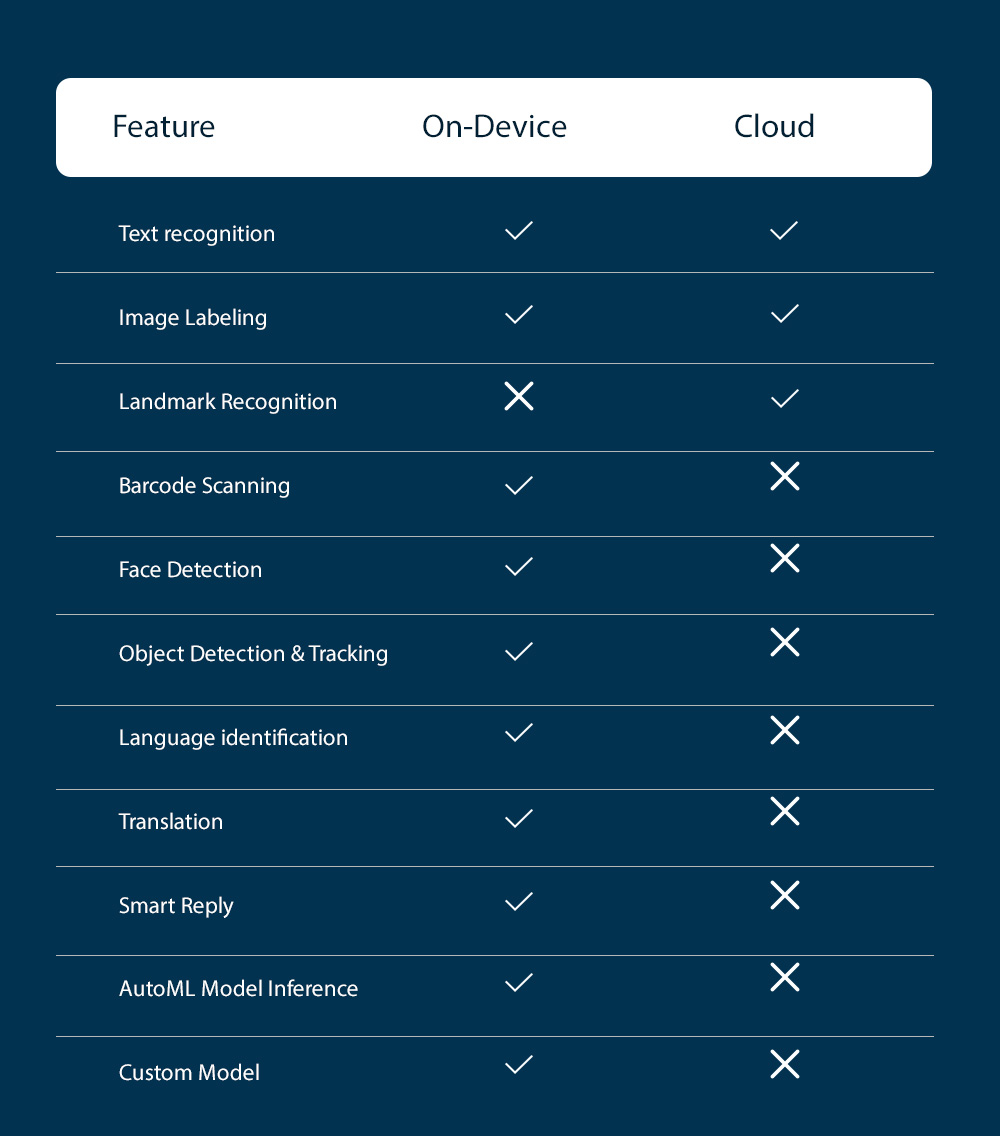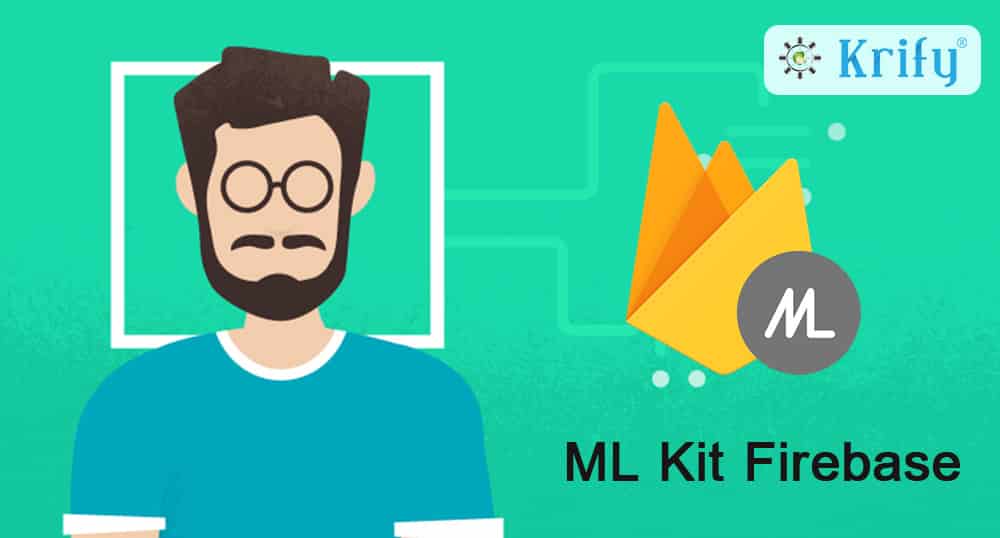Developing AI-based apps with ML Kit is revolutionizing mobile app development. Google’s ML Kit offers seamless integration of machine learning models, presenting a wealth of possibilities for developers. Unveiled at the 2019 Google I/O conference, it brings enhanced functionality in Android Q and introduces new smartphones like Pixel 3a and Pixel 3a XL.
For developers, the allure of ML Kit lies in its ability to simplify the integration of machine learning models into mobile apps, even for those with limited experience. Developing AI-based apps with ML Kit offers a range of features, from text recognition and face detection to barcode scanning and image labeling, making it accessible to developers of varying skill levels. ML Kit empowers developers to leverage cutting-edge AI technology without extensive expertise, opening doors to innovative app development. Additionally,Developing AI-based apps with ML Kit support for custom models enables developers to tailor AI solutions to their specific needs, further enhancing the flexibility and capability of their applications. With ML Kit, the potential for creating intelligent, AI-driven apps is within reach for developers of all backgrounds and skill levels.
One standout feature of ML Kit is its support for custom models, empowering developers to build and incorporate their own machine learning models tailored to their app’s specific needs. Developing AI-based apps with ML Kit becomes even more versatile with this capability. Whether it’s leveraging TensorFlow or exploring multi-platform support for both iOS and Android, ML Kit provides a flexible framework for AI-based app development.
The uniqueness of ML Kit
In 2018, Google introduced ML Kit SDK, a software development kit simplifying the integration of machine learning models into mobile apps. It is such simple that even new or junior developers can implement this and can deal with this ML Kit. Developers can launch ML Kit, which is accessible in beta, using Firebase. In the 2018 Google I/O presentation, Google released only five features, but now the count has doubled to 11, all of which are available along with APIs. Here is the features list as follows:
- Text Recognition
- Face detection
- Barcode Scanning
- Image Labeling
- Object Detection and tracking
- Landmark Recognition
- Language Identification
- Translation
- Smart Reply
- AutoML model Inference
- Custom Model Inference
What are the Unique functionalities of ML Kit?
-
Custom Models:
This is one of the best options for developers. If the existing ML Kit APIs don’t provide developers with the features they need, then they can build their custom ML models. There is an explanation on the Firebase, how developers can do it, and benefit from their models. ML Kit usually works with TensorFlow, which is a Machine Learning Library for iOS and Android OS. Developers will be enabled to download their model to Firebase console and bundle it with their required product. The model so built is too heavy, then the developer can go through it to the cloud and can download dynamically to the app, which reduces the app size for faster app download. Besides this, updates will be done proactively to the models and not to the whole app.
-
Multi-platform:
2019 ML Kit SDK has come up with multi-platform support, which means that APIs can be used for both iOS and Android Apps. The present ML Kit will compete with Core ML Kit from Apple. Core MLKit has more benefits than the ML Kit. For now, CoreML uses TensorFlow; even it accepts ONYX, Python tools, Apache MXNet. Android apps with version 4.0 can run using ML Kit, which one top specialty that means it is capable of working on old Android versions. The new releases, such as Android Oreo and Pie can work with better performance. Cloud models of Android use Standard Neural Network API.
-
Very Easy and transparency to use:
Integrating AI-based algorithms into apps can be challenging, requiring extensive skills and time. Developers must learn machine learning libraries like TensorFlow, PyTorch, etc., and understand neural networks. However, once the machine learning model is built, developers can relax as it runs smoothly on mobile devices without being resource-intensive. The new ML Kit SDK streamlines the process, allowing developers to pass data to the required API and receive responses seamlessly. Google representatives emphasize that developers don’t need extensive neural network skills to implement APIs. With just a few lines of code, apps can incorporate impressive AI-based features.
-
On-device and Cloud APIs:
Choosing on-device or cloud APIs will ultimately depend on the needs of the developers. If you are in a confused state which one to choose and which is better, then you should go for all the distinctions to make the right selection. A Cloud API processes data on the Google Cloud Platform, ensuring more accurate object recognition. loud On-device n. models usually need less space, as they can function offline, and data processing is faster, which is not so accurate. Cloud models are more significant than on-device models.
On-device and cloud model has its features. For example, features like text and landmark recognition, image labeling will work in the Cloud model, whereas text recognition, face detection, barcode scanning, image labeling, smart reply, language identification & translation, AutoML model inference, object detection, and tracking, Custom Model Inference will work well in On-device model.
How the ML Kit SDK interacts with other Firebase services?
ML Kit SDK may properly function with other Firebase services to ensure the proper functioning of various features. For example, image labeling relies on Cloud Firestore, Google Analytics measures user engagement, and Remote Config and ML Kit conduct A/B testing.
Here you go through the ML Kit: Machine learning for mobile developers (Firebase Summit 2018)
Critical features of ML Kit and their capabilities

-
Text Recognition:
This feature is available in both cloud and on-device. The Text Recognition API identifies Latin-based languages in text form, facilitating entry for credit cards, receipts, and business cards. Cloud-based APIs enable developers to extract text from images of documents which then used for document translation. By integrating Text recognition API, may allows reading numbers on real-world objects.
-
Landmark Recognition:
This API is accessible only in the cloud, which is used to recognize well-known landmarks in any image. The API also indicates the Geo coordinates of landmarks, enabling identification of the picture’s location. This data enhances metadata generation, providing users with a personalized experience. Landmark Recognition API integration helps the users to identify the images more precisely.
-
Barcode Scanning:
This is performed on the device which can detect the encoded data from barcodes using standard barcode formats without the use of the internet. The user can get what is inside the barcode. Barcode scanning API integration can identify the hidden, encoded data in the barcode.
-
Image Labeling:
This API, available on both on-device and cloud, identifies objects in images without metadata. Image labeling reveals details like animals, buildings, people, with confidence scores. Users can do automatic metadata generation and content moderation using this feature. Image Labeling API integration makes the user get exactly what the image is about.
-
Face Detection:
This API is available only in Offline used for the detection of faces in images, vital facial features, and build contours of detected faces. In this face detection API, the user can obtain faces from pictures and edit them using various filters and can generate avatars from users’ photos. Developers can integrate this face detection feature in the video chat or games, as ML Kit provides users with the ability to apply face detection feature in real-time mode. Integrating the Face Detection API into every app will be the best feature for enhancing security.
-
Language Identification and translation:
The name of the feature tells everything about this feature users can identify the language from one string. Most useful for translators. The Translation API integrates text translation between different languages, supporting up to 59 languages. It utilizes the same model as the Google Translate device app.
-
AutoML Vision Edge:
API is available offline, which enables developers to train their image labeling models that can identify up to 400 various categories. For instance, if the users want to identify and distinguish their pet breed. Developers utilize the AutoML Vision Edge tool integration to train models with images they upload.
-
Smart Reply:
It is available on the cloud using which Smart Reply generates reply suggestions of the whole conversion basis can build a full opinion, not just with the short answers like yes or no. for now this feature is available for only English language and only for casual conversations, not specific discussions. Smart Reply API integration will help for secure texting.
-
Custom Model Inference:
This feature is most beneficial for those developers who want to build their custom model using ML Kit using the TensorFlow Lite model.
To Sum Up
In conclusion, ML Kit stands out as one of the finest and most robust tools for developing machine learning-enabled apps. Apart from this, you can add your custom models for the integration of these features to your apps. Google will officially release ML Kit shortly. Meanwhile, Google will probably come up with a few more new features and capabilities in the future.
Krify is one among the leading website and mobile app development company in India and UK. Our developers well experienced in the latest emerging technologies and can adapt the upcoming machine Learning technologies. For more details contact us.









